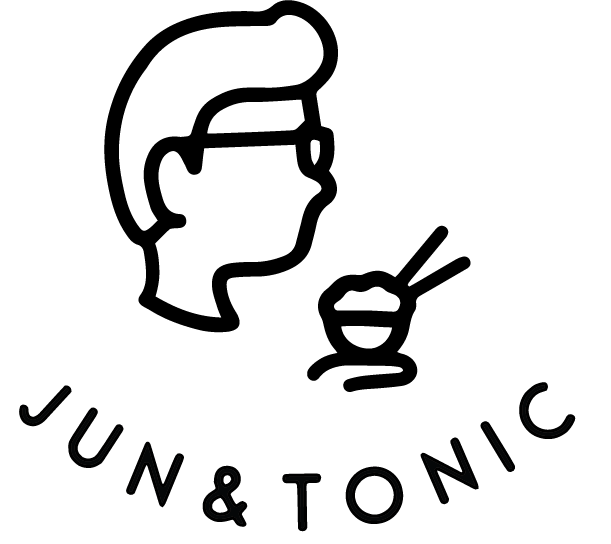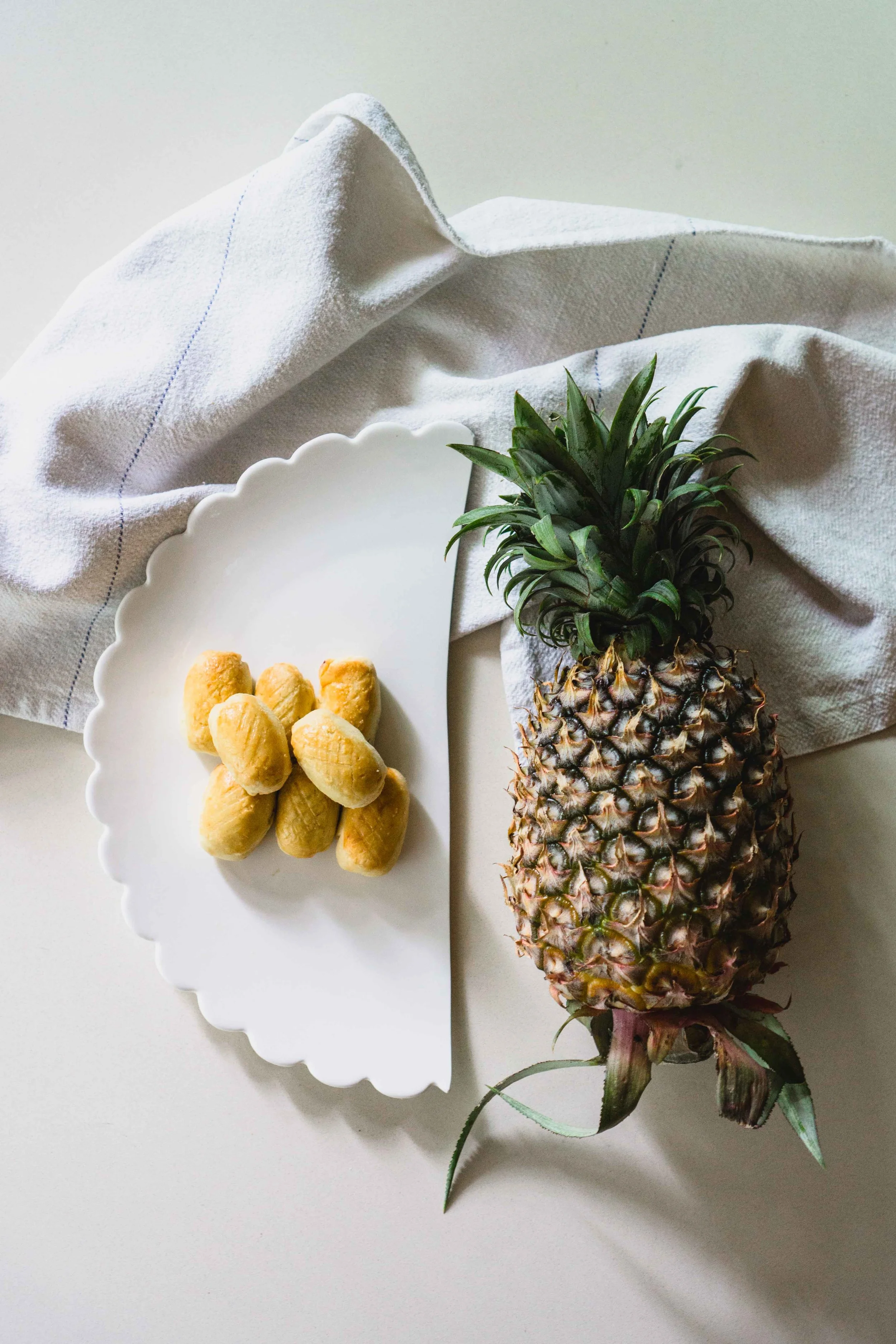8 Dishes for a (Very Malaysian) Chinese New Year
So this post didn’t start out as a listicle. Honest. I just made some pineapple tarts for Chinese New Year and was planning to just write the recipe for it and how it’s tied to the festive period. But while digging deep into my food research, I found out that these tarts aren't exactly the traditional Chinese New Year staples that I first assumed they were! And by traditional I mean from China (because, Chinese New Year).
These tarts have a really interesting backstory. If you look at where they were popularised (Malaysia, Singapore, and Taiwan mostly), you’ll find that they developed from the Chinese diaspora that migrated South to escape the war and politics of the mainland in the early-20th century. So in the modern New Year celebrations of Malaysia, Taiwan, and several other Southeast Asian countries, pineapple tarts very much take centre stage. Whereas in China, pineapple tarts rarely make an appearance during the New Year, if at all. See, food culture is super interesting, no? :D
I delved into this in greater depth in an article I wrote for literally my favourite food website - Food52!!! AHH I STILL CAN'T BELIEVE IT GOT ON THE SITE! <3
There's also a recipe for pineapple tarts at the end of this post. I was surprised with how well they turned out first time round, though the dough was a tad crumbly (not a bad thing, just more finicky to work with). I highly encourage you to make them if you’ve never tried pineapple tarts! I also made some in the shape of hamantaschens, resulting in these totally non-conformist, Molly Yeh-inspired Jewish-Chinese cookies. (Please don't shut down my site, JAKIM / Malaysia's Islamic government.)
In any case, my research got me thinking. There are actually a bunch of other foods/dishes that us Malaysians have naturally associated with Chinese New Year, assuming they’re part of ancient New Year tradition. But really, they’re very recent, wholly Malaysian additions to the New Year spread. And thank god for them.
So here’s the list of 8 Chinese New Year foods that are really more Malaysian than Chinese.
1. Nian gao in coconut
Starting off this list is a pretty old-school dish. For the uninitiated, nian gao is a hard, toffee-like rice cake made of glutinous rice flour, water, and sugar. They’re super tacky and close to inedible in their original form, but are sinfully divine (great oxymoron there btw) when heated up.
Nian gaos definitely originated from China, but the kind that is steamed and rolled in a flurry of freshly shredded coconut, resembling little candy-pillows? 100% Malaysian. (I think.)
2. Yee sang
Okay this is a weird one.
It’s basically a plate of initially separate strands of veggies, condiments (commonly carrots, radishes, peanuts, mushrooms and seaweed maybe, oftentimes fish), which is then mixed by everyone around the table at the same time with their chopsticks, all trying to outdo each other by tossing the food higher and higher. Sounds like a very weird ritual, yes, but also just really messy fun. Also very Malaysian. I didn't know no one really does this in China until a few years ago.
3. Peanut cookies
To make your Chinese New Year truly Malaysian, you need lotsa cookies or snacks for munching on when you’re not busy having an extended breakfast, lunch, or dinner. Yup, in Malaysia, the Chinese New Year celebration is really just 80% eating and 20% making money from red packets/gambling.
Of all the cookies, peanut cookies are the simplest, most straightforward ones. Basically what it says on the tin. They were also my favourite (besides pineapple tarts), until I discovered I’m slightly allergic to peanuts.
4. Kuih bahulu (a.k.a. Malaysian madeleines!?)
Bouncy, airy, often so dry it sucks up all the saliva in your mouth and you gasp for breath trying to swallow it. Some people call them Malaysian madeleines, but they’re a far cry from those buttery génoise pillow that are the OG madeleines. Still, very much a Malaysian New Year snack.
5. Love letters
Yet another super popular New Year snack. They’re also known as kuih kapit, and are essentially really thin, egg-based tuiles. They’re traditionally baked over a charcoal fire in a really cool mould, often with oriental designs on them. They’re then folded into quarters or into a scroll (to resemble a love letter, I’m guessing).
6. Murukku
Yes, murukkus are not Chinese. (They’re Indian.) But again, like the myriad of cookies/snacks already mentioned, they’re non-negotiable for a truly Malaysian Chinese New Year.
Weird to have an Indian snack so prominent in Chinese New Year culture, I know. But this is just what makes Malaysia such a great, multi-cultural country! (Well, great only when the politicians aren’t busy embezzling money, which is basically never.)
7. Durian
Okay they’re technically not a New Year food. But this year’s durian season just so happen to coincide with the New Year, so I’m sure durian will be on lotsa families’ tables over the festive period! They’re also golden, which gives them extra CNY points.
Also can I just say this durian season is a joke because we’ve already had like a continuous 5 months of durian. Ridiculous. Not that I’m complaining…
8. Pineapple tarts
But of course. Go make them, I promise you won’t regret it!
Also, Happy Chinese New Year!
- - -
Pineapple Tarts
makes ~50 tarts
Ingredients
Pineapple jam
1 medium pineapple
1 cinnamon stick
2 cloves
1 star anise
½ tsp (3g) vanilla essence
50g sugar, or more depending on the sweetness of the pineapple.
Tart dough
220g all-purpose flour
25g cornflour
5g salt
115g butter, cut into small cubes and chilled
2 egg yolks
30g caster sugar
30g water, plus more if the dough is too crumbly
Eggwash
1 egg
1 tbsp water
Directions
Pineapple jam
Remove the skin and eyes of the pineapple, and slice the pineapple flesh and core into medium-sized chunks. (I didn’t discard the core as I like the bit of texture it adds to the jam.) Blend pineapple in a food processor/blender until semi-smooth (around 30 seconds on high).
Pour the blended pineapple into a wide pan/pot, then add in the sugar and spices (cinnamon, cloves, star anise, vanilla).
Let it simmer on medium heat until it reaches the consistency of a thick marmalade, which should take around 1-1 ½ hours. Stir every 5 minutes or so to prevent any bits from catching on the bottom and burning.
When the mixture thickens into a jammy consistency, remove the spices. Then taste and add more sugar if needed. Transfer the jam into a bowl/container and refrigerate when cool.
Making the dough, plus baking
First, sift the all-purpose flour, cornflour, and salt together, and place in a standing mixer with a paddle attachment. Add the cold cubes of butter into the flour mixture and mix on medium until it reaches a sandy texture (this should take 30-60 seconds). Then, whisk the sugar, egg yolks, and water together and add this to the flour mixture. Mix briefly until a dough forms. (If still very crumbly, add one or two extra tablespoons of water until dough comes together.)
Roll the dough into a ball, flatten slightly, and wrap in plastic wrap. Refrigerate for at least 30 minutes, or up to 2 days.
Take the dough out of the fridge, and knead it a few times to equalise the temperature all around the dough. On a well-floured surface, roll the dough out until 1/6 inch thick (~4mm).
Cut circles out of the dough using a ring cutter (I find 7 or 8cm ones work best). Place 1 teaspoon (~8g) of the pineapple jam onto the centre of the dough circles. Fold in the sides, making sure the pineapple jam is concealed. Gently shape and roll into a ball. To make it oblong, pinch it in the middle and roll it lengthwise to get it to shape. Be gentle!
Using a knife, score a crosshatch pattern on the top of the pineapple tarts so they resemble pineapple eyes! Place the tarts on a lined baking tray, and brush a thin layer of eggwash on them. Bake for 20 minutes in an oven preheated to 190°C, until delightfully golden.
Enjoy! And as they say over Chinese New Year – “Ong lai!” (which is the word for pineapple in the Hokkien dialect, but is also a homonym for “come here, wealth!”)










